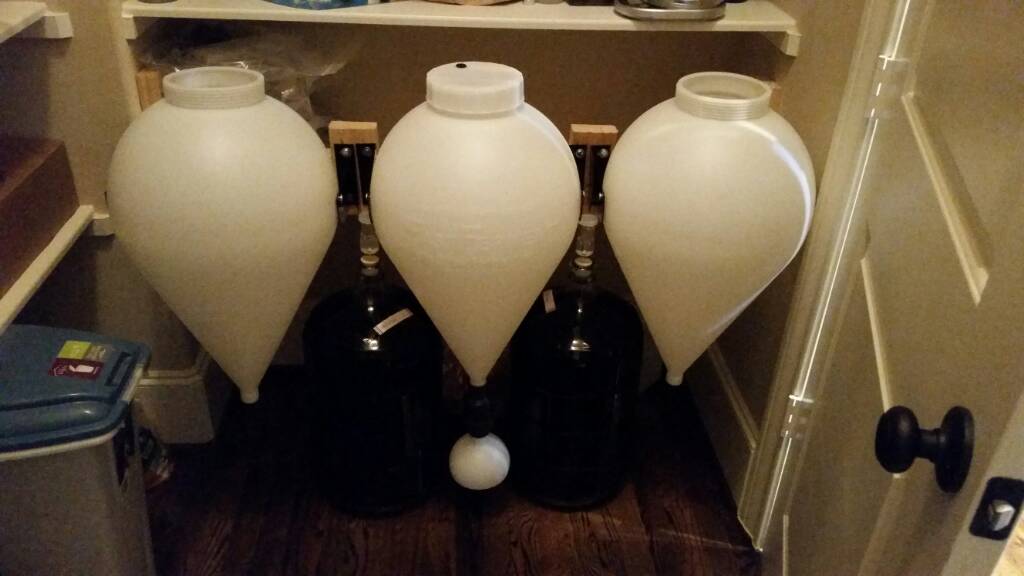I'm sure several of you, my wine making compadres, have entered the HBT giveaway of that fancy FastFerment conical fermenter. But, I'm curious, how would you use it for your wine if you win it?
I was mulling this over because if I don't win it, I would consider buying a few if it makes sense. And after reading some of the old V-vessel testimonials, it seems like lots of folks have used it for wine, with the most common benefit being that it eliminates racking. Whoa! No time spent racking, cleaning the pail, cleaning the carboy. Just a single vessel for all of it. I'm intrigued.
Some of my initial thoughts/skepticism are:
- What about head space? For long term aging this needs to be minimized, but is the head space in this vessel any worse than the oxygen we expose our wines to when we rack from one vessel to the next?
- Overall height? Does the wall mount system make the unit so tall that I'm going to need a step ladder to access the top and do things like stir my wine?
- Any additions that float or are too big to sink into the 1" opening in the bottom ball would require a bag of some sort so you can fish it out when the time comes.
- This thing would look great in the wine closet I'm dreaming of...
I'd love to hear your ideas on this fermenter. Seems reasonable priced, if it makes sense for the home wine makers.
I was mulling this over because if I don't win it, I would consider buying a few if it makes sense. And after reading some of the old V-vessel testimonials, it seems like lots of folks have used it for wine, with the most common benefit being that it eliminates racking. Whoa! No time spent racking, cleaning the pail, cleaning the carboy. Just a single vessel for all of it. I'm intrigued.
Some of my initial thoughts/skepticism are:
- What about head space? For long term aging this needs to be minimized, but is the head space in this vessel any worse than the oxygen we expose our wines to when we rack from one vessel to the next?
- Overall height? Does the wall mount system make the unit so tall that I'm going to need a step ladder to access the top and do things like stir my wine?
- Any additions that float or are too big to sink into the 1" opening in the bottom ball would require a bag of some sort so you can fish it out when the time comes.
- This thing would look great in the wine closet I'm dreaming of...
I'd love to hear your ideas on this fermenter. Seems reasonable priced, if it makes sense for the home wine makers.


































![Craft A Brew - Safale BE-256 Yeast - Fermentis - Belgian Ale Dry Yeast - For Belgian & Strong Ales - Ingredients for Home Brewing - Beer Making Supplies - [3 Pack]](https://m.media-amazon.com/images/I/51bcKEwQmWL._SL500_.jpg)
























